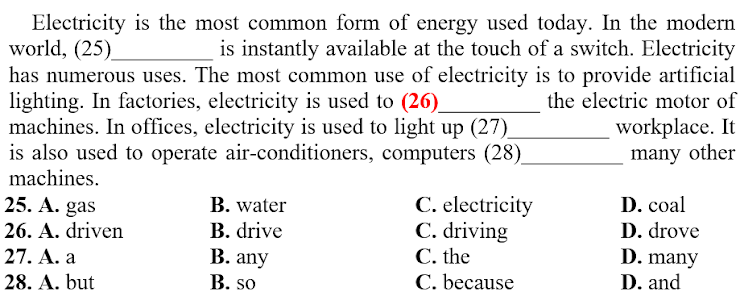Read the following passage and mark the letter A, B, C or D to indicate the correct word or phrase that best fits each of the numbered blanks from 31 to 35.
GETTING TO THE ROOT OF BONSAI CRIME
Bonsai trees have always been a source of great fascination to people. They are perfect miniatures, grown in pots small enough to sit on a windowsill. You have to keep reminding yourself that these frees are actually real and identical to their larger cousins in all (31) ______except their size. Rather like other small and perfectly-formed artifacts, bonsai trees command quite a high price in the marketplace and so it doesn't come as a great surprise to find that they also (32) ______the attention of thieves. It seems that quite a flourishing business has evolved, in which they are stolen from the homes of growers and collectors, then repotted and trimmed by unscrupulous dealers, to be sold on, at good prices, to (33) ______buyers.
One of Britain's top collectors of bonsai trees, Paul Widdington, believes that he has found a solution, however. After losing his life's work, valued at £250,000, when burglars broke into his home one night, Paul decided to (34) ______the possibilities of electronically tagging the trees he bought as a replacement. This involves injecting a microchip the size of a grain of rice into the trunk of each tree. Each chip is a laser-etched with information which is stored in a central register held by the police. Paul is quite aware that this kind of data-tagging doesn't (35) ______thieves from stealing the trees in the first place, although it may increase the chances of getting them back. So he's also installing a security alarm system complete with infra-red detectors, in his home
điền ô 34
A. look into
B. set about
C. try out
D. go after























